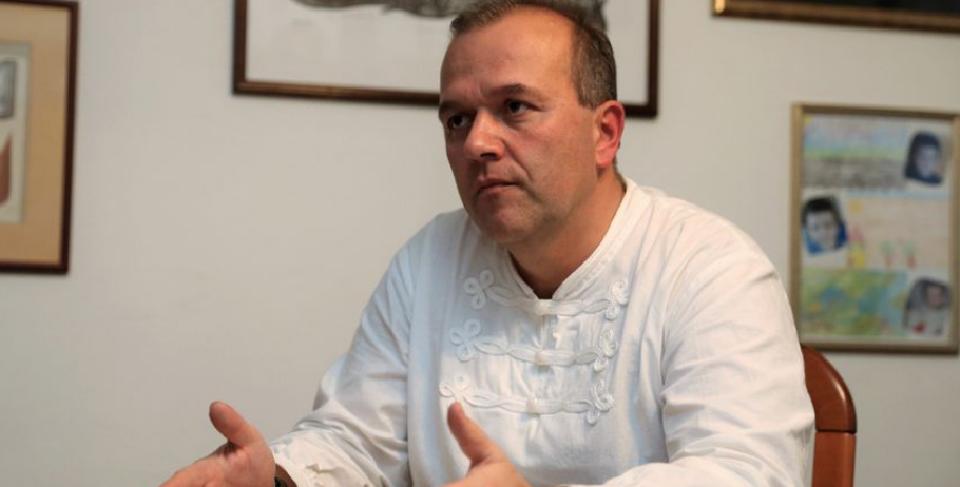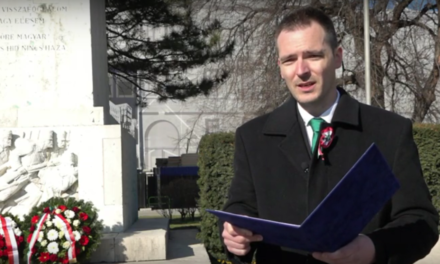17 years ago, on September 19, the manhunts in Gyurcsány began, around this time the September 2006 wave of state terror raged.
On this occasion, the National Legal Protection Service, which represents the majority of the victims of the fall of 2006 and still demands the accountability of those responsible for state terror, sees it as important to once again summarize the essence of the events of the fall of 2006 state terror and once again remind us of these never-ending crimes, for which it must be held accountable to the perpetrators. In addition, those responsible, those who collaborate with them and those who deny the atrocities must never come close to power!
After the publication of the infamous Gyurcsány speech in Balatonöszöd on September 17, 2006, admitting to the election fraud and defrauding the Hungarian people, nationwide demands were made for the departure of the lying and national-destroying left-liberal government. The country was seething, it is now obvious that a popular uprising was taking place, which threatened to sweep the regime at the time. It was only a matter of time when the police in the capital, which had already been controlled by Péter Gergényi for years, would attack the protesters.
During the time of the MSZP-SZDSZ, which came to power in 2002, by this time the police had violently and illegally broken up many peaceful anti-government demonstrations, the participants were arbitrarily detained and then subjected to conceptual proceedings. Tools similar to the police state methods of autumn 2006 had been used years before by the left-liberal government at the time against dissenting right-wing opposition parties, but in the autumn of 2006 this was brought to the level of state terror, which was continued by the left-liberal government after 2006 until its fall.
Today, irrefutable evidence (pictures and film recordings, thousands of eyewitnesses, dozens of final judgments and investigative reports, e.g. Civil Committee Report, Balsa report, Parliament report, National Ombudsman Service report) proves that the Gyurcsánys are systematically illegal in order to keep the left-liberal government in power in the autumn of 2006, they used force of arms and attacked the Hungarian people protesting against them with raw violence. The goal was intimidation, retaliation, the preservation of power, and deterring the exercise of basic freedoms and resistance.
Already on the evening of the siege against MTV's headquarters on September 18, 2006 and the following morning, we received reports on behalf of the victims of police violence. Witnesses, friends and desperate parents asked for legal protection for those in trouble.
And the next evening, on September 19, 2006, all hell broke loose, when the crowd marching from Kossuth square in front of the MSZP headquarters, demanding Gyurcsány's resignation and the departure of the government, was attacked on Köztársaság tér with a horse charge and riot police with police dogs. That morning, Gyurcsány ordered the leaders of the police to the Parliament, who he pushed aside because of the TV siege that ended in defeat for them, and demanded tough action. The police fulfilled the expectation.
The police became more and more cruel on orders from a higher level, and on the evening of September 19 and the dawn of the 20th, the manhunts in Budapest reached their peak, and the September wave lasted until September 21.
During the manhunts in September 2006, demonstrators, people on their way home, and passers-by were beaten indiscriminately. In several cases, the detainees were first dragged to the courtyard of the Magyar Rádió in Ávós, which was turned into a torture chamber and concentration camp, and from there to police custody. Many of them were subjected to humiliation, torture and inhumane treatment, forced interrogations that lasted until dawn.
The prisons of the capital were filled with intimidated, mostly injured, deprived of the right to protection, humiliated young people, whose loved ones did not know anything about them for days.
Vans without police markings roamed the city, and policemen jumping out of them, without identification, attacked young people on their way home from a party, beat them to a bloody pulp, collected them, then put them under unreasonable suspicions and arbitrarily detained them.
Two hundred young people were also taken into pre-trial detention in the first instance, and during their detention, which often lasted for weeks, they underwent terrible trials, because violence also ran rampant in the BV institutions: they humiliated and beat many of them as Hungarians.
Legal reprisals and statutory sentences took place on a conveyor belt with the help of sworn judges and prosecutors, who were not held accountable like political and police leaders.
It is worth listening to Kossuth Rádió Good Morning in Hungary . broadcast of his program on September 26, 2022 , in which dr. Lawyer Tamás Gaudi-Nagy, executive director of the National Legal Protection Service, made a statement about the manhunts in Budapest, when the September wave of terror in Gyurcsány raged uncontrollably.
The bloody manhunts September 19-21, 2006. after the days between
Many people would not have thought that after a series of cruel attacks and manhunts in September, the largest opposition party at the time, Fidesz, organized for the 50th anniversary of the 1956 War of Independence, and the Kossuth square demonstrators would also be targeted: rubber bullet and tear gas grenades, horse charges, water cannon attacks, mass beatings, cruelty, broken bones, shooting eyes, arbitrary arrests and manhunts that lasted until dawn the next day.
According to the data of the National Legal Protection Service, the fundamental political freedoms of thousands of people were violated by armed violence on September 19-21 and October 23-24, 2006, nearly a thousand suffered physical and mental injuries, more than 200 civilians were seriously injured, and 14 lost their sight.
One of the most seriously injured, Attila Csorba, who lost his job after sustaining a permanent eye injury and suffered a mental breakdown, took his own life years later, thus being an indirect victim of police terrorism.
But we also consider László Nagy, who died last December, as a fatal victim of terror. He lost the sight of one of his eyes due to the bestial shooting in the eye on October 23, 2006, and his life fell into a serious crisis from which there was no way out. Gabika Apáthy, who died in March of this year, was also considered a victim of police terrorism. She was shot in the neck on October 23, 2006 near Astoria and carried the burden of this injury until her death.
Neither then nor since then, the EU has not raised any objections to the left-liberal government and, in a pharisaical way, it still considers those who are responsible for state terror or their allies who were complicit in the human rights crimes of the time as their ostentatious "democratic" partners.
The majority of the victims who suffered police violence in 2006 and demanded reparations received compensation only after the change of government in 2010, but many people do not know their sufferings and torture, and since then a generation has grown up who did not experience the events of that time.
For this reason, the National Filmmakers' Association, the National Legal Protection Service and the CÖF have jointly revealed footage that has not been made available to the general public on any platform so far on the occasion of the 15th anniversary of state terror. film series 2006 – Days of Terror was completed Drowned in Blood . it was also seen at a national traveling exhibition.
The Freedom Drowned in Blood exhibition is visiting new locations
This filling-in-the-blanks and astounding documentary film series, which has the force of evidence, was largely produced by György Budaházy together with his three co-authors (Lajos Almási, Nándor Kelecsényi and Ákos Szilágyi), dr. Tamás Gaudi-Nagy was the legal expert.
The first five parts of the series are about the September wave of police terror in 2006, which we recommend everyone to watch in connection with this anniversary. The 2nd part, for example, presents the story of the bloody lynching of Dániel Dukán, a university student at the time, in this, as in a drop of the sea, there is terror in all its elements:
The entire article can be read on the website of the National Ombudsman Service!
Featured image source: Magyar Nemzet












